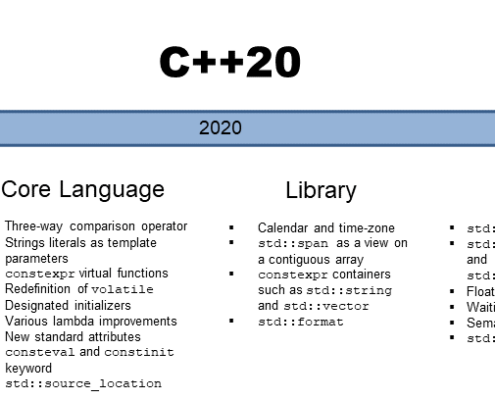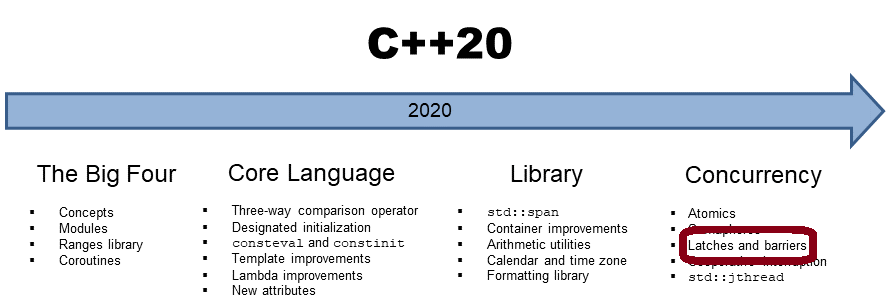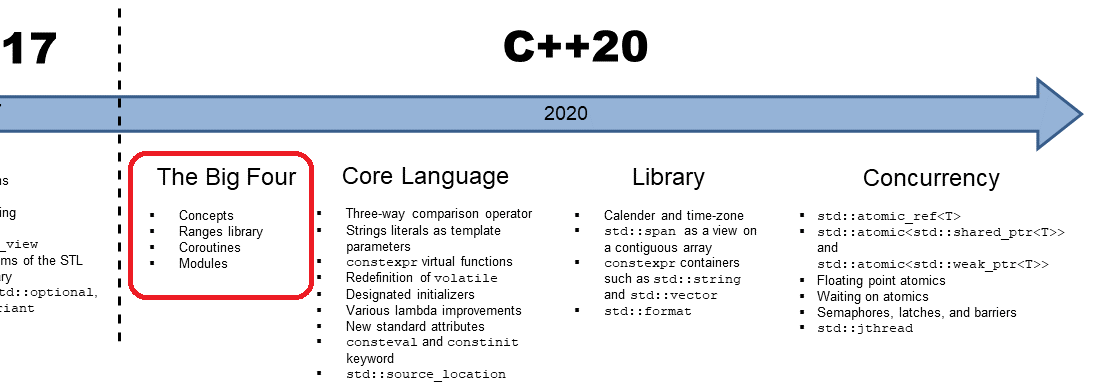Posts

C++20: More Details about Module Support of the Big Three
In my last post, "C++20: Module Support of the Big Three", I compiled a simple module with the Big Three.…

C++20: Module Support of the Big Three
I have written almost 100 posts about C++20 in the last four years, but I'm not done. This post continues…

C++23: A Modularized Standard Library, std::print and std::println
The C++23 standard library has very impressive improvements. In this post, I will write about the modularized…

C++20 Modules: Private Module Fragment and Header Units
/
0 Comments
In the last weeks, I learned something new about modules in C++20: private modules fragments and header…

C++20: Further Open Questions to Modules
So far, I have written in my last four posts the basics you should know about modules in C++20. Only…

C++20: Structure Modules
When your module becomes bigger, you want to divide its functionality into manageable components. C++20…

C++20: Module Interface Unit and Module Implementation Unit
Thanks to the module interface unit and implementation unit, you can separate the interface from the…

C++20: A Simple math Module
Modules are one of the four prominent features of C++20. They overcome the restrictions of header files…

C++20: The Advantages of Modules
Modules are one of the four big features of C++20: concepts, ranges, coroutines, and modules. Modules…

C++20: The Big Four
This post presents you the big four: concepts, ranges, coroutines, and modules.
C++20 has a lot…
